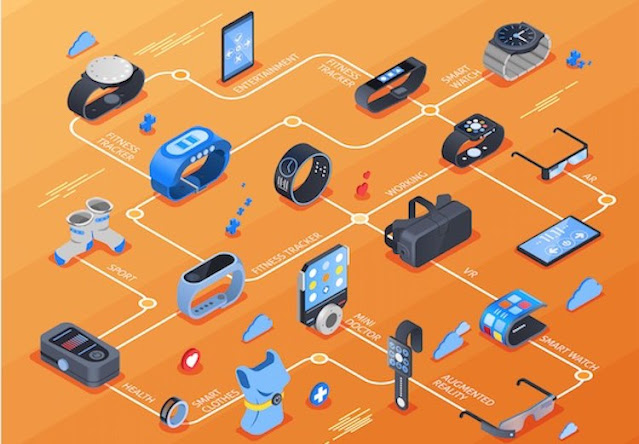Wearable technology can be defined as electrical goods that have been integrated with a particular technology.
 |
| Wearable Technology |
Wearable
technology is generally comprised of electrical goods that have been integrated
with a certain type of technology. The technology can be worn on the body to
track information in real-time. Wearable technologies refer to wristbands that
may be worn on the wrist to track data such as pulse, heart rate, steps taken,
sleep hours, and more. Jawbone, Apple, Fitbit, and a slew of other companies
have released activity tracker wristbands. This has amassed a sizable customer
base all across the world. Wearable technology has caused a shift in fitness,
which has resulted in a large client base. Fitbit, for example, sold roughly 14
million pieces of its smart fitness wristbands, according to a report.
Wearable technologies are becoming more popular as a result of
characteristics including simplicity of use, adaptability, and convenience. It
also offers real-time data monitoring, operational efficiency, and fitness
tracking, all of which contribute to the market's growth.
Increased implementation of
wearables across various verticals has an impact on their application.
Furthermore, technological advancements in software and hardware components, as
well as their increased adoption in fitness, healthcare, and defense,
contribute to the growth
of wearable technology. However, limited battery life and security
concerns limit wearables' adoption in wearables technology companies.
Wearables
are used in a variety of industries, including defense, consumer applications,
lifestyle, fitness and sports, enterprise, and industrial. The market is
expected to be driven by increased awareness of the benefits of wearables and
technological advancement.
The rising popularity of connected devices
and the Internet of Things (IoT), as well as the rapid growth of the
technologically literate population worldwide, are expected to drive demand for wearable technology over the
forecast timeframe. Furthermore, the rising prevalence of chronic diseases and
obesity has aided in the adoption of wearable products such as activity
trackers and body monitors, which provide real-time data on the user's overall
well-being. These wearable devices also provide information about daily events
as well as physiological data such as sleep quality, heart rate, blood oxygen
level, blood pressure, cholesterol level, and calories burned.



Comments
Post a Comment